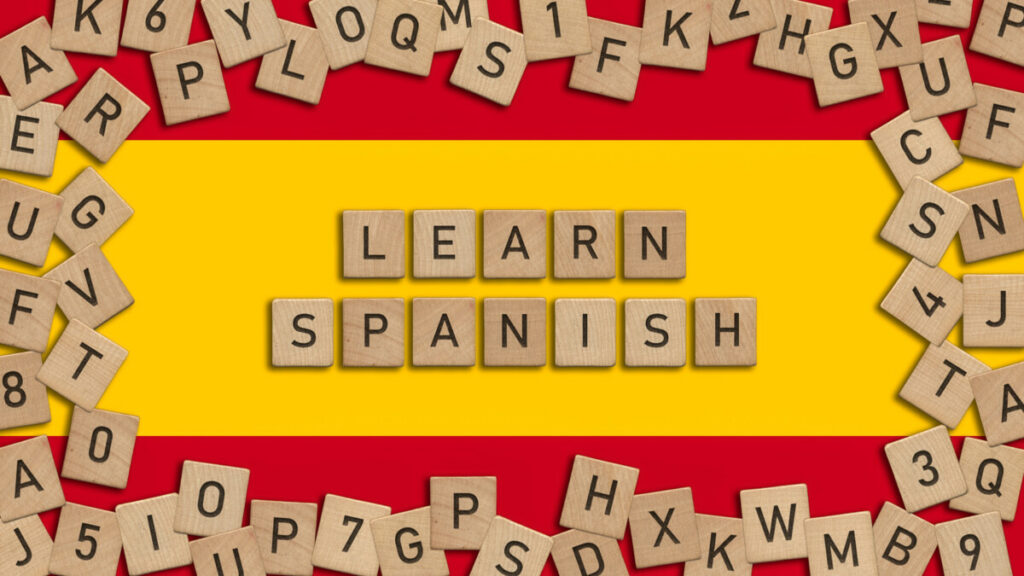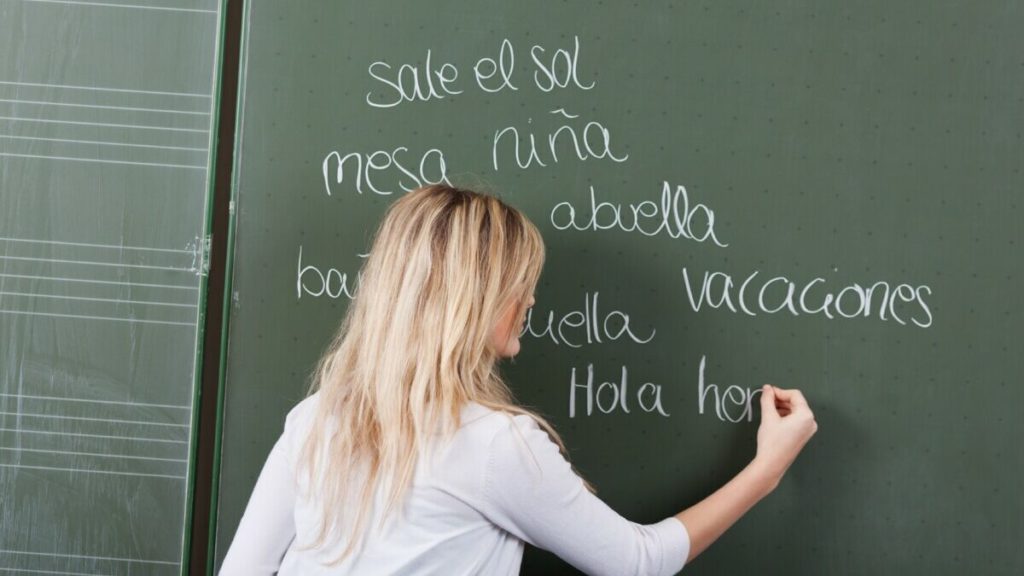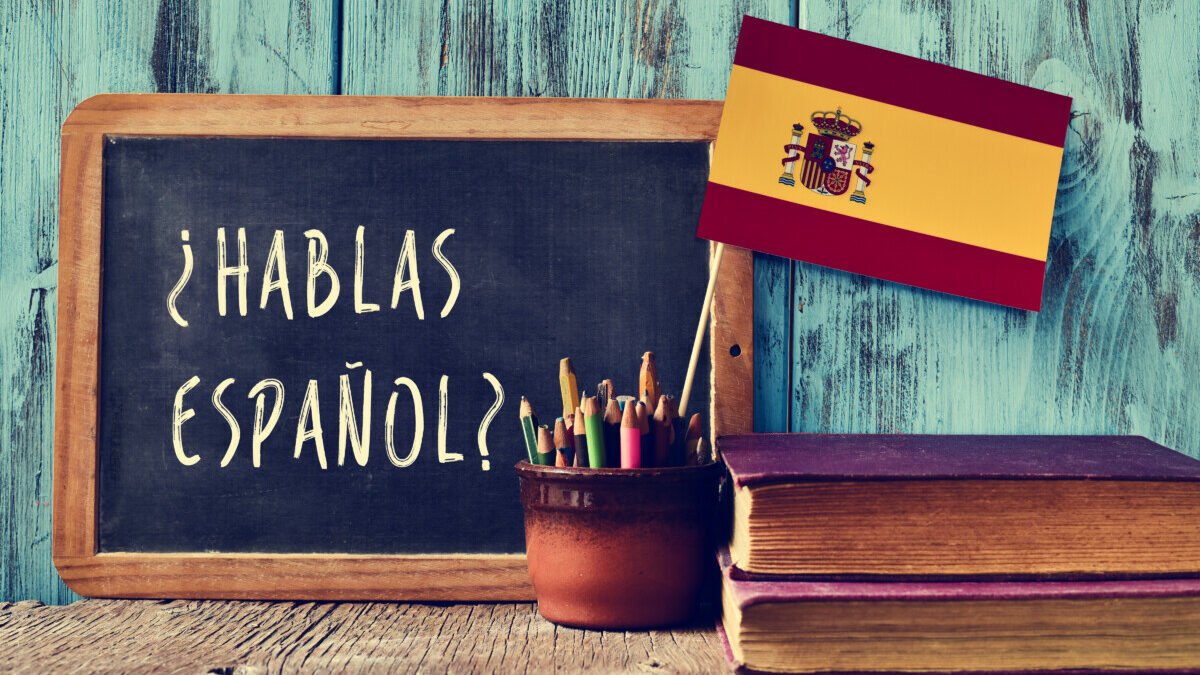When it comes to learning a different language, Spanish is one of the most popular in the world and is rated as the third most commonly studied, behind only English and French. And when it comes to popular language learning apps, Spanish is often rated as the most studied language. But what are the levels of Spanish?
The Common European Framework of Reference for Languages (CEFR) states that Spanish has six different levels of difficulty, rated A1, A2, B1, B2, C1, and C2. The A levels are easier and typically rated for a basic or beginning user, and the C levels are for proficient level speakers.
So, I have now listed off a bunch of different levels that the CEFR uses to determine what level you are at when it comes to speaking Spanish, however, as of this point you can’t really tell what means what. Throughout the rest of this article, I will explain each of the six different levels of Spanish and what they mean. along with that, I will also cover some of the best apps and websites to go and learn Spanish.
What Is The Common European Framework of Reference for Languages?
The Common European Framework of Reference (usually abbreviated to the CEFR or CEF) describes what language learners can do at different stages of their learning. The CEFR is language-neutral, which means that it can be applied to any foreign language learning situation.
It was originally designed as a comprehensive reference tool to promote educational transparency and to allow movement between countries for work or study within the European Union. Since its publication in 2001, the CEFR has been translated into 37 languages and its use has spread outside Europe, from Asia to Latin America, as an aid in defining levels for learning, teaching, and assessment.
The CEFR describes six broad levels of ability, with A1 being the lowest and C2 the highest. Learners are classified into three distinct groups: the Basic User (levels A1 and A2), the Independent User (B1 and B2), and the Proficient User (C1 and C2). As these titles suggest, learners develop not just in terms of the actual language they have available, but also in terms of their strategies for communicating.
The CEFR describes what learners can do across five language skills: Spoken Interaction, Spoken Production, Listening, Reading, and Writing. For all five skills at each level, there are sets of detailed ‘Can Do’ statements. By dividing Speaking into two, the CEFR focuses both on the learner’s production and their ability to take part in conversations and discussions.
This makes it easy for anyone involved in language teaching and testing, such as teachers or learners, to see the level of different qualifications. It also means that employers and educational institutions can easily compare our qualifications to other exams in their country.
Basic User (Level A)

This is the first level that the Common European Framework of Reference for Languages uses when determining how proficient someone is at Spanish. This is the lowest level and where the vast majority of people are going to be starting if they are just beginning to learn Spanish and have no other experience.
The A level is for those who have no knowledge of Spanish words or even sentence structure. These first two levels are the ones that are going to give you the structure for the rest of your time learning Spanish as this will give you a wide Spanish vocabulary and start to speak in sentences.
Level A1
When it comes to the starting level, in A1, you are going to be focused on understanding and using familiar everyday expressions and very basic phrases aimed at the satisfaction of the needs of a concrete type. These include the ability to introduce him/herself and others and can ask and answer questions about personal details such as where he/she lives, people he/she knows, and things he/she has. You also will be able to interact in a simple way in case the other person talks slowly and clearly and is prepared to help.
The amount of time that it takes to get through this first section depends heavily on how much time you are putting into studying and how dedicated you are to remembering to study each day. If you are diligent in your efforts to study every single day and it will take anywhere from 4 to 8 weeks. By the time these 4 to 8 weeks are done, you will likely have put in anywhere from 60 to 85 hours of learning and studying depending on your learning ability.
Level A2
Once you get past level A1, you are going to start learning some more basic sentence and conversation skills. The goal of this level is to help the student understand sentences and frequently used expressions related to areas of most immediate relevance (e.g. very basic personal and family information, shopping, local geography, employment).
Along with that, you also are taught to communicate through simple and routine tasks requiring a simple and direct exchange of information on familiar and routine matters. And lastly, you will be able to describe in simple terms aspects of his/her background, immediate environment, and matters in areas of immediate need.
Getting through level A2 will heavily depend on how much effort and dedication you are putting into your learning process. Dedicated study will help you pick up on the language faster, however, it still will take you a fair amount of time to get through this level. Typically, you can expect it to take about 10 to 12 weeks of extremely heavy study or about 20 lessons per week. This means you can expect to study for another 100 hours to get through level A2.
Independent User (Level B)

Once you have gotten through the first and easiest level, which was meant for basic and beginning users, you will get to move on to the independent user level, which will all start with a “B”. Those who grew up around much more Spanish than you were are likely going to be starting around this level, but this is also going to be the level when you are going to start holding conversations about a wide variety of different topics.
Any of the intermediate-level classes are going to be those that are taught in schools, with preliminary schools teaching B1, and junior high, or high schools tending to teach classes around the B2 level. Both of these levels are also the point when you are going to be able to start using your Spanish for business purposes.
Level B1
Congratulations, you have managed to get to the independent user stage, meaning that you are going to start having some more complex lessons in the following two levels. In B1, you are going to learn to understand the main points of clear standard input on familiar matters regularly encountered in work, school, leisure, etc.
You can deal with most situations that are likely to arise while traveling in an area where the language is spoken. You can also produce simple connected texts on topics that are familiar or of personal interest and can describe experiences and events, dreams, hopes, and ambitions and briefly give reasons and explanations for opinions and plans.
So, with these much more difficult concepts to learn, how long will it take to move on to level B2? Well, if you are studying super hard each day, then you can expect to spend about 12 to 14 weeks. This means that once you have gotten done with A2, then you are likely going to spend 160 to 175 more hours learning Spanish before moving on to B2.
Level B2
Congrats, at this point you likely have spent about 380 to 420 hours studying Spanish, and so you are doing very well, however, you are only halfway through the CEFR levels. When in level B2, you are going to get to learn to understand the main ideas of complex text on both concrete and abstract topics, including technical discussions in his/her field of specialization.
You can interact with people with a degree of fluency and spontaneity that makes regular interaction with native speakers quite possible without strain for either party. You can also produce clear, detailed text on a wide range of subjects and explain a viewpoint on a topical issue giving the advantages and disadvantages of various options.
As you are getting into more and more complex topics, expect to put a lot of time into studying and learning more language rules. If you decide to do an intensive Spanish course, you will need between 18 and 24 weeks. Summing this up into the number of hours you are having to put in, expect to spend another 240 to 255 hours studying, bringing your total up to 620 to 675 hours.
Proficient User (Level C)

If you have managed to get through the independent/intermediate level of the CEFR rating, then you are in really good shape as you are now at the point where you are considered a proficient user/speaker of the language. This will get you to the point you will be at the level where you are likely just as proficient at Spanish as many of the native speakers.
These are the levels where you are going to mostly just start mastering all of the previous skills that you have already learned and also get introduced to some of the more obscure rules of Spanish.
Level C1
If you have managed to be dedicated enough to put in the needed effort to reach the proficient level in the CEFR rating then you are already proficient and likely are close to a local in your ability to speak Spanish. In level C1, you are going to learn how to understand a wide range of demanding, longer texts, and recognize implicit meaning.
You can express ideas fluently and spontaneously without much obvious searching for expressions. You can also use language flexibly and effectively for social, academic, and professional purposes. You will also be able to produce clear, well-structured, detailed text on complex subjects, showing controlled use of organizational patterns, connectors, and cohesive devices.
You should expect to spend about 12 to 14 weeks or about 160 to 175 hours getting to this level.
Level C2
In the final level, you are going to be getting the final tips and tricks of the language. By the end of C2, you should be able to understand virtually everything heard or read in Spanish with ease. You will be able to summarize information from different spoken and written sources, reconstructing arguments and accounts in a coherent presentation. You will also be able to express him/herself spontaneously, very fluently, and precisely, and differentiate finer shades of meaning even in the most complex situations.
At this point, you have already spent 780 to 850 hours studying Spanish, however, you can add another 12 to 14 weeks to this total. This means that by the time you have gotten through all of the CEFRs levels for Spanish, you will have spent anywhere from 940 to 1025 hours studying the language.
Where to Learn Spanish

When it comes to learning Spanish, you have a variety of different methods to choose from. The quickest and hardest way to learn Spanish is to go somewhere where the locals only speak Spanish and over time you will learn. Doing this method took me about 6 months to be considered proficient.
However, this is extremely difficult, and other great options include getting an app for learning Spanish like Duolingo or Babbel. Both of these apps are very effective at helping you learn Spanish and also are great at making it fun, and encouraging daily practice. Both of these apps do this by making the learning process like a game, helping you stay diligent and excited about learning Spanish.
Along with apps, another great way to learn Spanish is to simply sign up for classes. There are a variety of in-person and online classes that you can sign up for that are great. This is often the most effective method, as it will often let you learn alongside other students who will be able to help and support you.
